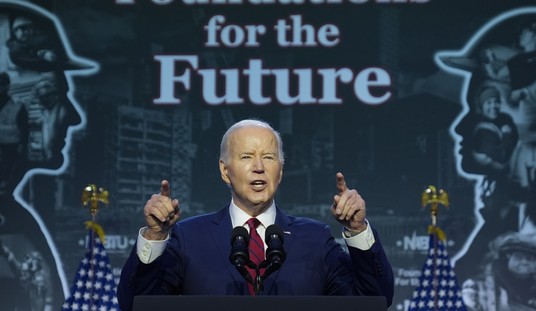Automobiles are everywhere, so it might come as a shock to some that the culture surrounding their creation and appreciation is dying. America has a long, rich history with the automobile — to the extent that you could call it a love story. Many a man and woman have been bewitched by the thundering horses under the hood, the smell of rich leather, the pulsing power felt underfoot, and the consequential adrenaline rush from a short spin around the block. The automobile is an essential piece of the cultural fabric of America. We helped to invent it, fine-tune it, unleash it… and, in the end, we fell in love with it. Owning a car became a source of pride, as well as a symbol of success and freedom. What’s more American than the image of a green, 1940s Chevy pick-up driving down a stretch of Route 66, a tan arm resting on the rolled-down window, fingers feeling the wind? It makes you want to yell, “America!” and go drink a Coke on the 4th of July.
Unfortunately, I’m not so sure this vision is a reality anymore. The vibrant love between car and man that inspired an entire culture of auto devotees now seems to be dwindling. The gear-head enthusiasts will always motor on, I am sure, but what happened to the average American? Simple respect and appreciation for the metal beast has shifted to sheer disinterest in cars. The following is the sad, draft-obituary of America’s car culture…

1. The Infiltration of Technology Has Killed the Act of “Driving.”
Americans have evolved from “car people” to “computer-in-the-car people.” The car has become an extension of the computer and, subsequently, has lost some of the characteristics that made it an automobile.
Before computers, drivers had to be in tune with the car, understand its quirks and know how to compensate for them when driving. One had to be aware of tire pressure, oil levels, and any minute differences in handling that might indicate a problem; you also actually had to drive the car. Today, your car notifies you about everything that could possibly go wrong in the engine bay and cabin, and even compensates for you in bad weather or uneven terrain. The driver is merely a warm body sitting in one of its seats. The driver could hardly be called “master and commander” in his own car; the car’s computer knows more about what is going on in and around the vehicle than the driver. Americans enjoy the car beeping in cascading metallic tones, giving light shows on the dashboard, and automatically turning on systems and switching some off, while the driver sits on the hand-stitched-leather perch. The thrill of driving isn’t the draw to cars any longer (technology can now drive for you!); it’s the cool features you can get in the car and the ease of allowing the computer to do everything. Technology is planning a coup d’état against the human driver.

2. No More Turning Wrenches In the Garage — Cars are Inaccessible to Mr. Fix-Its.
Technology has made most cars into motorized computer-bots that are self-sufficient and inaccessible to everyday-tinkerers. Not only do its features practically require an IT degree to understand and fix, but also, the engine isn’t even available for tinkering. It was part of “Automotive Americana” to spend the afternoon in the garage, “workin’ on the car” — changing the oil, patching leaks, and making adjustments. Physical access to the car’s engine and underbody is almost impossible on most new vehicles. A few years ago, I took a 2009 Infiniti M35 to the local automotive service center to get the oil changed. What should have been a 15-minute stop turned into a 45-minute affair. The under-body of the car had an armor-like plastic cover that had to be removed to drain the oil. Removing the undertray took two men and 15 minutes. Of course, this tray could be removed if a self-assured, hobbyist mechanic really wanted to fiddle with the undercarriage, but, honestly, many would take one look at that undertray and give up due to the hassle. I do not blame them.
The engine bays are not much better. I very well know that the 2012 Ford Focus has a plastic engine cover reminiscent of a chastity belt. Good luck plucking up the courage to remove it.
True, there are some advantages to not fiddling with your car (in order to preserve the warranty or simply because one isn’t mechanically inclined), but even if you wanted to do something yourself, you are immediately faced with obstacles. These automotive “body guards” dampen the adventurous spirits that want to use their own hands to fix up their own car — and take pride in their job well done. The “do-it-yourself” attitude is almost irrelevant when it comes to modern automobiles… they just aren’t accessible to the “modern man” anymore.

3. Cars and Their Owners: Now a Menace.
Obtaining a driver’s license and owning a car used to be milestones that could almost rival the importance of graduating high school. To have this piece of paper and a set of keys meant you were unstoppable — you had the liberty to go anywhere you wanted, whenever you wanted. Car ownership was revered — it made one proud.
Funny how things have changed. The opinions of automobiles have changed from “reverence” to “annoyance.” What was once a badge of success and a piece of the American Dream is now being hailed a dirty menace that must be contained.
Metropolitan areas have started to crack down on motorists — primarily by making it harder for them to use their cars. For example, take Washington, D.C., the “epicenter of freedom.” The nation’s capital is already unfriendly towards cars; especially out-of-state drivers. Even if you work in D.C., you cannot park your Virginia- or Maryland-plated car on the streets for more than two hours; which means you have to re-park your car every 120 minutes or risk a ridiculous ticket. The Parking Enforcement cars prowl the streets like wolves, looking to ruin the day of unsuspecting tourists from Kansas. Giving out slips of paper has become a major source of revenue for Washington, D.C. — they love to hate cars.
Further exacerbating the frustrating parking situation, the Washington Post ran an article a few weeks ago announcing that D.C. is going to eliminate street parking in some residential areas and replace the parking with bike lanes. This city is punishing not only out-of-state visitors, but also their own residents! As a result, the same number of residents will have to fight for a smaller number of parking spaces — spaces that aren’t even in their neighborhood.
What was achieved? Making drivers despise having a car because they can hardly operate it in their own city? Signaling to car owners that their cars are unwanted and will be harder to accommodate as time goes on? Hinting that it’s public transit or nothing? All of the above. D.C. intends to squeeze car owners until they are so fed up they don’t dare drive a car into the district and are forced to use public transportation. Unfortunately, that means no more “go where you want, when you want”; the subway and bus system have hours. Bye, bye freedom.

4. Cookie-Cutter Copy-Cat Cars: Un-American and the Antithesis of Innovation.
Styling and design are in big trouble here in America. Take a close look at the nearest parking lot and you will see what I mean. Do the examples of “automotive ingenuity” parked there inspire you? No, probably not—mostly because you can’t even tell the difference between the cars you are looking at. About 95% of the cars there look like the same vehicle, merely in a different color, sporting a different badge. These are the results of the automotive industry’s current trajectory for design and innovation: an industry-wide, adult version of “copy-cat.”
The automotive industry, as a group, is guilty of copy-cat practices—just about everyone could be indicted in my court of auto-design justice. Mid-market brands are fashioning their exteriors to look like models from the luxury brand portfolios and the luxury brands are copying the designs from successful competitors. A few car magazines have pointed out the similarities between the Honda Accord’s new body styling and the BMW 3-series. Coincidence? Probably not. The front end and grille of the new Ford Fusion looks like a cousin of the Jaguar XF or the Aston Martin DBS. Purposeful? You betcha.
Even more pitiful are the brand-specific stylistic details that are appearing in other makes — and are being hailed as “innovative.” When the Toyota Prius arrived, its, now iconic, wedge shape was different and its functional hybrid technology was dynamic. It set the bar for future hybrids. Since its appearance, Honda, Cadillac, and Ford have not only replicated the shape of the Prius, but even chose to market their “new” models as hybrids. (Compare the Toyota Prius to the Honda Insight, the Cadillac ELR Plug-in, and the Ford C-max.) This isn’t innovation — it’s cloning success and trying to remarket it as something new! The list of examples has no end. Granted, there are only so many ways steel and aluminum can be shaped to make a hood or trunk, but I don’t think we’ve completely run out of ideas by 2013.
Car designs today are a far cry from the raw Shelby Cobra, venomous Dodge Viper, and classic Chevy Corvette — all dynamic designs of their day. We are stuck in a sad cycle of design incest and it needs to stop. The fact that designers are becoming serial cheaters is pathetic and un-American. Ingenuity is an American virtue! How can a culture sustain itself if nothing fresh replaces the old, tired designs and nobody is held accountable for cheating? Twenty years from now, what will we deem to be a “classic car” of this era or the car “ahead of its time” if the majority of the cars are cookie-cutter replicas of each other? Designers need to seek NEW, creative solutions that shake up the design field and diversify the highway. We are Americans; we’re good at shaking things up.

The End
Three-time Formula One champion Aryton Senna is a driving legend in racing circles. Senna was the embodiment of pure, driving talent but he also came under some criticism for his almost reckless maneuvers during races. Regardless of the viewpoints on Senna’s racing style, he won races and he pushed himself and his car to the limit. He was ruthless because he knew that in order to be a good racing driver, a winner, he had to take risks to win:
Where there is a gap, you either commit yourself as a professional racing driver that is designed to win races, or you come second or you come third or you come fifth… if you no longer go for a gap that exists, you are no longer a racing driver.
If one loses their edge and no longer takes the risks to do their job well, then they can no longer be considered part of that profession. Historically, America has been a proud car-nation. Applying “Senna logic,” an America that loses its edge to innovate and loses its appreciation for the automobile cannot be considered a nation supportive of car culture… it will cease to be what is has been in the past. Sadly, we’re almost there.
****
More on cars at PJ Lifestyle:









Join the conversation as a VIP Member